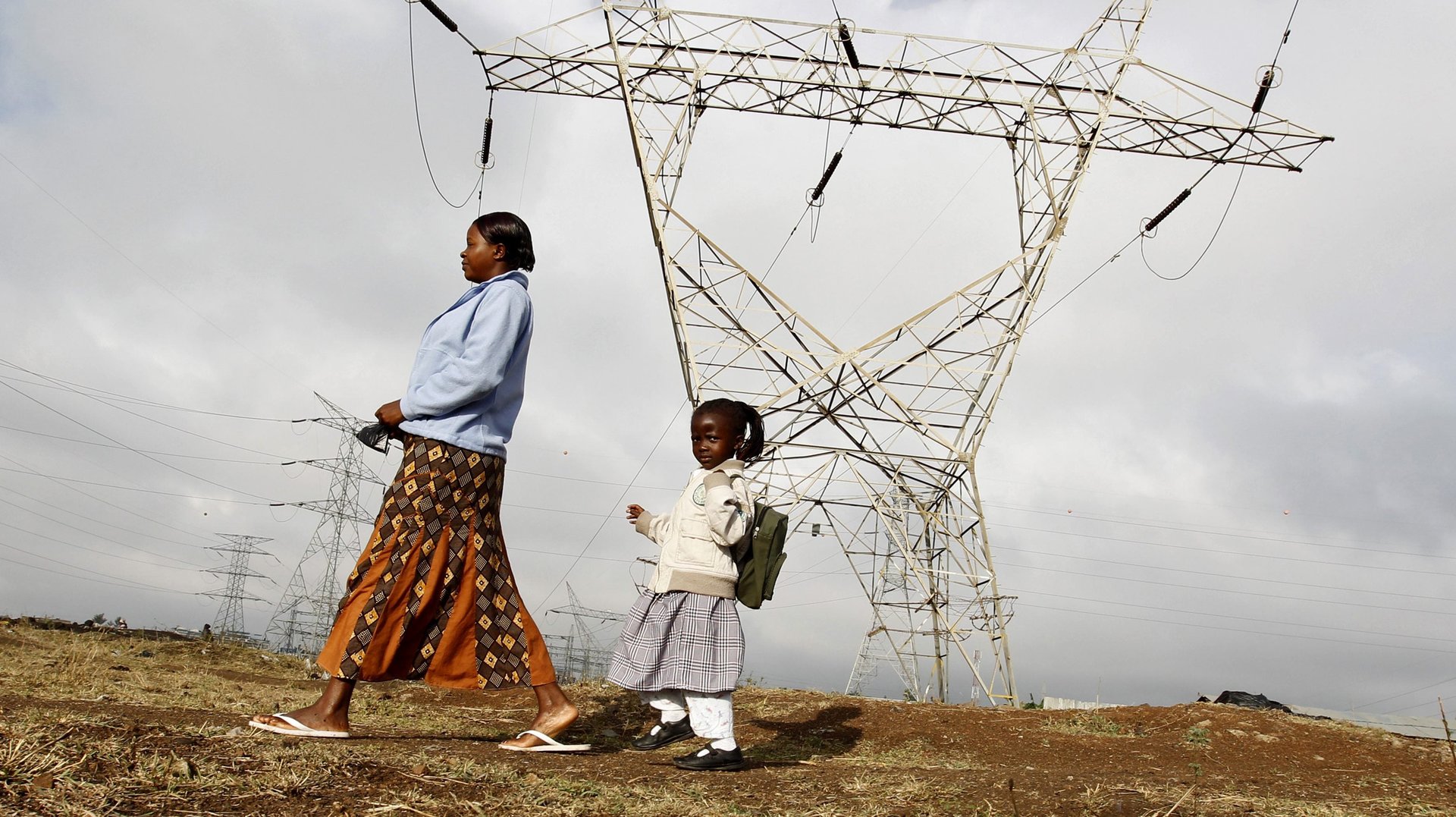Private investment could be the key to bringing electricity to millions of Africans
Across Africa, electricity is a luxury afforded almost exclusively by the affluent.


Across Africa, electricity is a luxury afforded almost exclusively by the affluent.
About 600 million poor or rural people—or two in three Africans—do not have access to a power supply. The continent’s generation capacity also lags behind global averages, remaining at 100 gigawatts, which is one-third of India’s capacity. The frequent power shortages and the high prices of electricity is a major drag on growth, and hurts social development and the delivery of government services.
Part of the problem is the limited private financing options available to governments, a new World Bank report shows. In most African countries, government-owned companies still control the process of financing, building, operating, and connecting consumers to the grid. African governments invested about $12 billion a year in the power sector in the last decade, even though it needed an estimated $33 billion in 2015 and will need $63 billion in 2040.
Private money is much needed given the fiscal constraints African countries face. The combined length of transmission networks in 38 countries in sub-Saharan Africa is 112,196 kilometers (69,715 miles). In contrast, at 125,640 kilometers, Brazil has a longer interconnected network than Africa, while the United States has more than double the length of Africa at 257,000 kilometers. Compared to other regions, Africa also has fewer kilometers of transmission lines per capita. The length of transmission per million people in Africa is 247 kilometers, compared to 295 kilometers in Colombia, 339 kilometers in Peru, and 807 kilometers in the US.
To address the funding gap, the Bank says private partnerships could play a complementary role in scaling up public investments. Such money would be used to create cost-efficient sources of power generation, reduce the reserves needed to ensure the security of supply, and support the adoption of renewable energy sources. Private investment would also boost technical expertise, introduce performance incentives, and induce stronger accountability in the sector.
One promising business model that has worked in Latin American, is the independent power transmission (IPT) model. Under this model, whatever company builds the electric facilities sells it to end users. Peru, Chile, and India have successfully employed IPTs to rapidly increase their ability to generate electric power.
African governments will have to develop policies and legal frameworks that support private investment and many, such as Senegal, prohibit privately financed power generation. For this model to work in Africa, governments will also need to run competitive and corruption-free tenders.